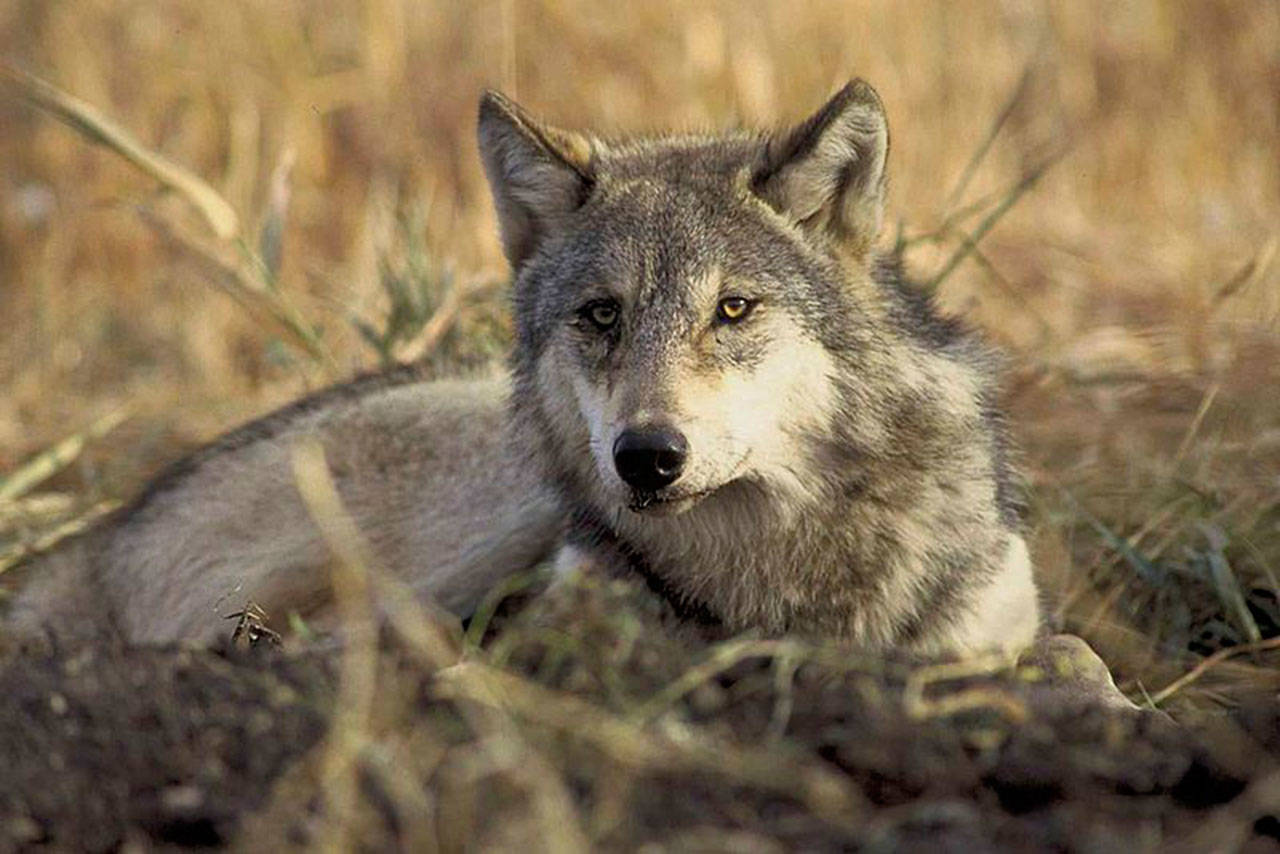Monitoring a returning wolf population has been a priority of the Washington State Department of Fish and Wildlife, and if biologists’ predictions are correct, King County may see gray wolves in the future.
Fish and Wildlife biologist and wolf manager Ben Maletzke gave a presentation on wolf populations on April 16 at an Upper Snoqualmie Valley Elk Management Group meeting in North Bend. Wolves have been returning to the state since at least 2008 after being eradicated by humans in the early 20th Century. According to Conservation Northwest, the last wolves in the state were killed in the 1930s on the Olympic Peninsula. Since the 1990s, wolves have been returning on their own as they cross the borders from British Columbia, Idaho and Oregon.
“All the wolves that are here in Washington walked in here themselves,” Maletzke said.
There are at least 122 wolves in the state comprising 22 known packs. Three conservation zones exist, which the state uses to study wolf packs. One is the Eastern zone encompassing everything east of Highway 97. This is where 106 of the known wolves are, with many concentrated in the northeast corner of the state above Spokane.
The North Cascades zone stretches from roughly north of Interstate 90 and west of Hwy 97. The Southern Cascades zone includes southwest Washington and the Olympic Peninsula. There are no known packs in southwest Washington or the peninsula, but three exist in the North Cascades. The Teanaway pack is the closest to King County living near Cle Elum. It has at least eight wolves and one breeding pair compared to 13 breeding pairs to the east.
Breeding pairs are a male and female couple who have at least two pups that survive until the end of a calendar year. The state tracks packs through 16 collared wolves from 11 different packs as they move around their roughly 350 square-mile territories. While these pairs often have between four to seven pups, attrition rates are high.
“They have a lot of pups, but they don’t always make it through the year,” Maletzke said.
This is primarily due to pups being shot, hit by cars or killed by other predators like cougars.
Wolves are protected by state law in all parts of Washington but were recently federally de-listed as an endangered species in Eastern Washington. In both western zones, they are still federally endangered.
However, as unclaimed land in Eastern Washington reaches dwindles, Maletzke expects to see more packs pop up in the North Cascades as the animals search for territory.
At around three years of age, wolves strike out on their own in search of a place to call home. They can range hundreds of miles, and in one case, a collared wolf from Eastern Washington strolled all the way down to Yellowstone National Park in Wyoming. If packs become to large they can break apart or if they are hunted, they often disperse.
The western foothills of the Cascades could become home to wolf packs due to a lack of currently existing populations and plenty of mule deer and elk, Maletzke said.
The Everett Herald reported that the state has given the University of Washington $172,000 to see if wolves are recolonizing a 5,000 square kilometer area in the south Cascades region and how this could impact the predator-prey dynamics. Fish and Wildlife is additionally getting $183,000 to study if relocating wolves would help recovery.
Wolves have been the topic of heated debate in some parts of the state after two packs were culled by Fish and Wildlife in both 2016 and 2017 following a string of livestock killings in northeast Washington. Both the Sherman and Profanity Peak packs were hunted and the remaining wolves dispersed.
These packs were located next to each west of Kettle Falls. The Profanity Peak pack attacked or killed more than 15 livestock. In order to take lethal action, the same pack must kill three livestock in 30 days, or four livestock in four months. Washington wolves killed eight livestock in 2017, down from a high of 30 in 2014. It is unknown why these packs began attacking livestock in northeast Washington, but Maletzke said it was likely a combination of open-grazing, which allows cattle to roam forestland, as well as a possible lack of other game for the wolves.
The Department of Natural Resources and the federal Forest Service issue grazing permits and dictate where livestock can graze, which Fish and Wildlife can’t change.
The Seattle Times reported last June that ranchers in eastern Washington have been stressed over the influx of wolves as cattle are attacked and killed. After the lethal removal of the Profanity Peak pack, many farmers and state officials became victims of harassment and death threats. It is unclear if wolf packs will encroach into more urban cattle farms in western Washington, many of which are relatively close to large cities.
Maletzke said the Department of Fish and Wildlife tries a variety of tactics to scare wolves off if they are attacking livestock before they lethally remove them. Some $600,000 is spent annually on educating farmers on ways to keep their livestock safe. Ranchers are also eligible for financial compensation for livestock killed by wolves.
Wolves rarely attack humans, preferring to run rather than fight.
“There’s very few interactions with people and wolves,” Maletzke said.
As with most wildlife, Maletzke cautioned residents to keep food sources locked up to decrease the chance of dangerous encounters. He added that Fish and Wildlife also appreciate reports of sightings, tracks or wolf scat.


